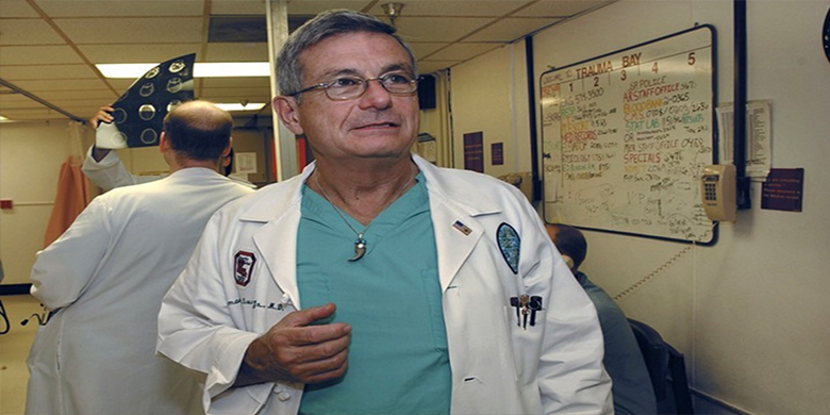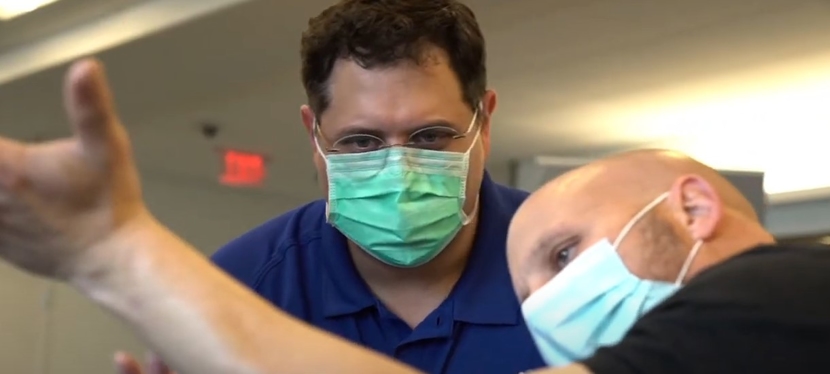NOLA, We’ve Got to Talk About Heart Disease in Women
- Category: Living Well
- Posted On:
- Written By: Navya Nair, MD
.jpeg)
Ladies, we’ve gotta have a heart-to-heart.
Cardiovascular disease is often viewed primarily as a men’s health issue, but that couldn’t be further from the truth. In fact, cardiovascular disease is the number one killer of women in the United States, claiming more lives than all types of cancer combined, including breast cancer.
Despite the stats, cardiovascular disease in women often goes under-recognized. When surveyed, only about 50% of women know that it’s their number one threat! The problem isn’t just lack of awareness, though. If you don’t know the info, risks, and signs to watch out for (psst—they are different for women than men!) heart disease is much harder to prevent and detect early.
Whether you are a woman or someone who cares about one, everyone should know the facts about cardiovascular disease in women. Let’s get to the heart of it!
First things first: What is cardiovascular disease?
Cardiovascular disease can refer to several conditions, including heart disease, heart attack, stroke, heart failure, arrhythmia, and heart valve problems.
Heart disease most often occurs due to a process called atherosclerosis. This condition develops when a buildup of fat, cholesterol, and other substances form a plaque that clogs artery walls, making it harder for blood to flow freely. When blood flow is severely restricted or completely blocked off, it can lead to dangerous issues such as heart attack or stroke.
While heart disease is a vast topic, here are some quick definitions for some of the most common threats to women:
- Heart attack: Occurs when the flow of blood to the heart is blocked, most often due to a buildup of plaque in the arteries.
- Stroke: Caused by blockage due to a blood clot in the blood vessel that feeds the brain.
- Heart failure: Occurs when the heart isn’t pumping blood as well as it should and therefore isn’t able to provide the body with enough blood and oxygen.
- Arrhythmia: Refers to an abnormal heart rhythm and valvular disease that occurs when one or more of the valves in the heart aren’t functioning properly.
.jpeg)
Know the signs: Early detection saves lives
Women often exhibit different symptoms from men when experiencing life-threatening cardiac events, like a heart attack or stroke. In fact, in about half of all heart attacks in women, typical male symptoms (including chest pain) do not occur.
This is where lack of widespread awareness about women’s heart disease becomes dangerous. If individuals aren’t aware of what signs to watch out for in women, it can cause confusion that delays early detection and immediate treatment—both of which are essential to saving lives when every second counts.
Heart attack symptoms
Heart attack symptoms in both women and men include:
- Pain, pressure, squeezing, or stabbing pain in the chest
- Pain radiating to neck, shoulder, back, arm, or jaw
- Pounding heart, change in rhythm
- Difficulty breathing
- Heartburn, nausea, vomiting, abdominal pain
- Cold sweats or clammy skin
- Dizziness
Heart attack symptoms seen specifically in women include:
- Milder symptoms (without chest pain)
- Shortness of breath
- Sudden onset of weakness, extreme fatigue, body aches, or overall feeling of illness (without chest pain)
- Unusual feeling or mild discomfort in the back, chest, arm, neck, or jaw (without chest pain)
- Nausea or vomiting
- Indigestion
- Dizziness/Fainting
.jpeg)
Stroke symptoms
Stroke symptoms in both women and men include:
- Sudden numbness or weakness of face, arm, or leg, especially on one side of the body
- Sudden confusion, trouble speaking, or understanding
- Sudden trouble seeing in one or both eyes
- Sudden trouble walking, dizziness, loss of balance, or coordination
- Sudden severe headache with no known cause
Stroke symptoms seen specifically in women include:
- Loss of consciousness or fainting
- General weakness
- Difficulty or shortness of breath
- Confusion, unresponsiveness, or disorientation
- Sudden behavioral change
- Agitation
- Hallucination
- Nausea or vomiting
- Pain
- Seizures
- Hiccups
Preventing and reducing risk of cardiovascular disease
While the thought of heart disease can be scary, it’s important to recognize that nearly 80% of cardiac events are preventable.
Key prevention measures for both women and men include not smoking, exercising regularly (about 150 minutes a week of moderate exercise is recommended), maintaining a healthy body weight, and eating a healthy diet that includes a wide variety of fruits, veggies, whole grains, low-fat or nonfat dairy products, fish, legumes, protein sources low in saturated fat, and more.
Another important prevention strategy is having an open conversation about heart disease with your primary care doctor. Your doctor will examine you, consult with you, and help you understand your individual risk. They may order blood work to calculate your risk of heart disease.
They may also ask you about:
- Past medical history, including (but not limited to) heart disease and diabetes
- Any issues during pregnancies
- Any autoimmune diseases
- Any signs of early menopause
- Current symptoms you may be experiencing
- Lifestyle factors that can increase your risk of heart disease, including smoking, stress, anxiety, poor diet, and lack of physical activity
While cardiovascular disease continues to be a big threat, you’ve taken an important first step by reading up about what heart disease means for women. Keep it up by sharing this post with someone else. Let’s spread the word and spread the love. It may even save a life!
Learn more about Heart & Vascular Care at University Medical Center New Orleans and call 504.702.5700 to schedule an appointment.


